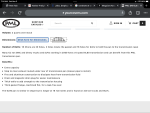I have a 2012 Sierra SLE 4x4 Crew Cab with 101,000 miles on it. It sounds and drives like its new. I've changed the oil every 5,000 miles, but this question is about the transmission fluid. I don't tow anything and the truck has had an easy driving life. I just replaced the original front brake pads and they still had life in them at 95,000 miles, as an example.
I drained and filled at 50,000 miles about 5 years ago or so. At that time, the fluid was bright red, didn't smell and was at the right level. I'm at the 100,000 mile point now and know it's time to drop the pan, change the filter, etc......
But I looked at the fluid yesterday and it's beautiful.....bright red, smells good, right level, etc....
Do I leave it alone or go ahead and do the pan drop?
Automatic service maintenance guidance is so confusing. So many opinions on it too. I know what the owner's manual says and I'm usually a "follow the owner's manual" guy. Rules and maintenance schedules are something driven into me by spending 24 years in the Navy too. But this is one of those times I'm thinking it might be prudent to leave "good" alone.
Thanks.
Mark
I drained and filled at 50,000 miles about 5 years ago or so. At that time, the fluid was bright red, didn't smell and was at the right level. I'm at the 100,000 mile point now and know it's time to drop the pan, change the filter, etc......
But I looked at the fluid yesterday and it's beautiful.....bright red, smells good, right level, etc....
Do I leave it alone or go ahead and do the pan drop?
Automatic service maintenance guidance is so confusing. So many opinions on it too. I know what the owner's manual says and I'm usually a "follow the owner's manual" guy. Rules and maintenance schedules are something driven into me by spending 24 years in the Navy too. But this is one of those times I'm thinking it might be prudent to leave "good" alone.
Thanks.
Mark








